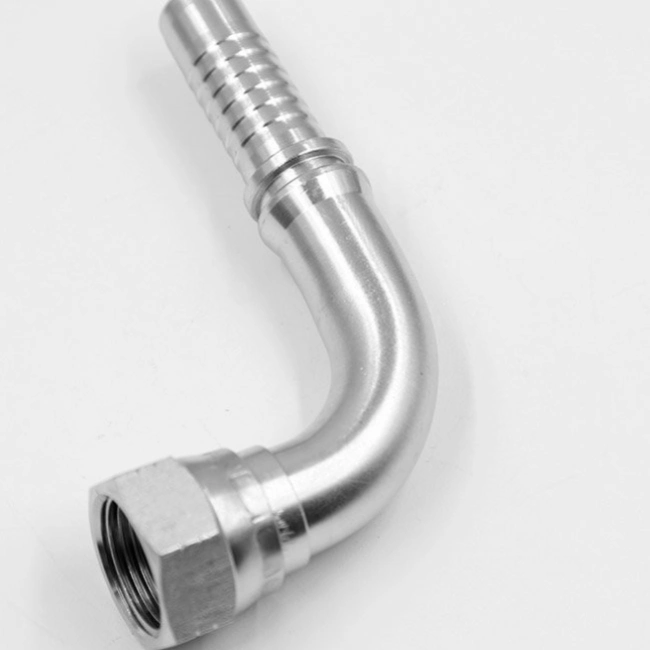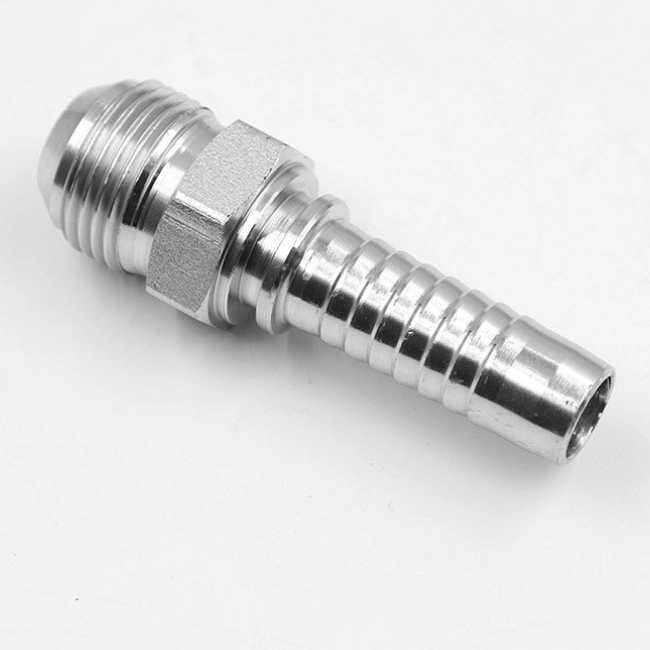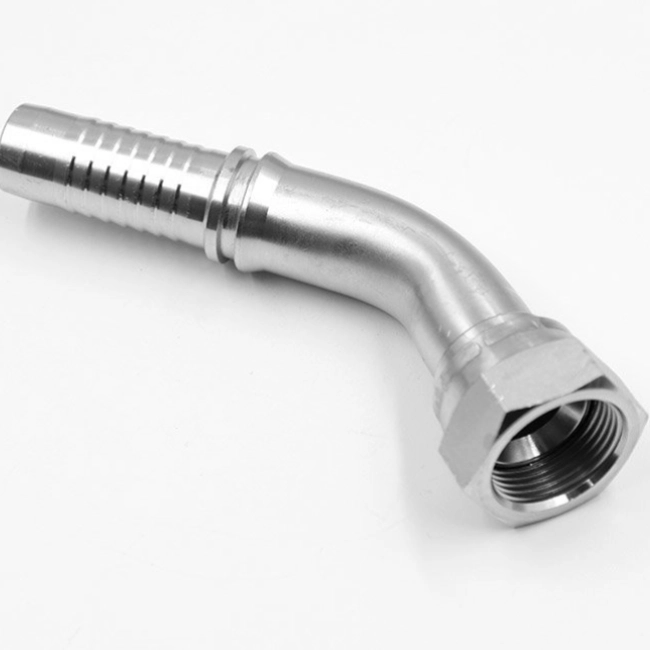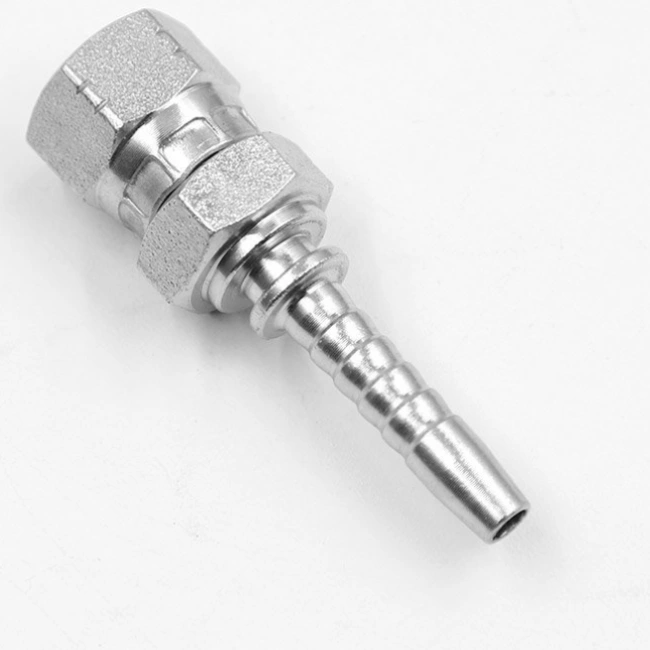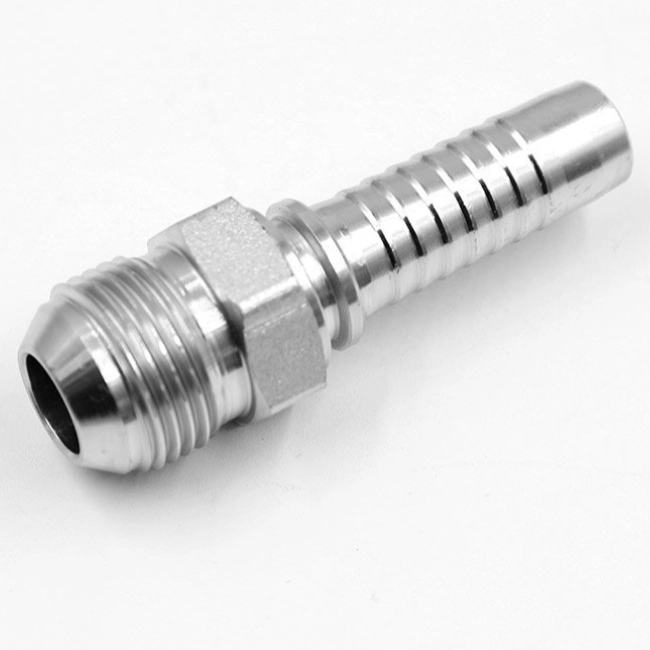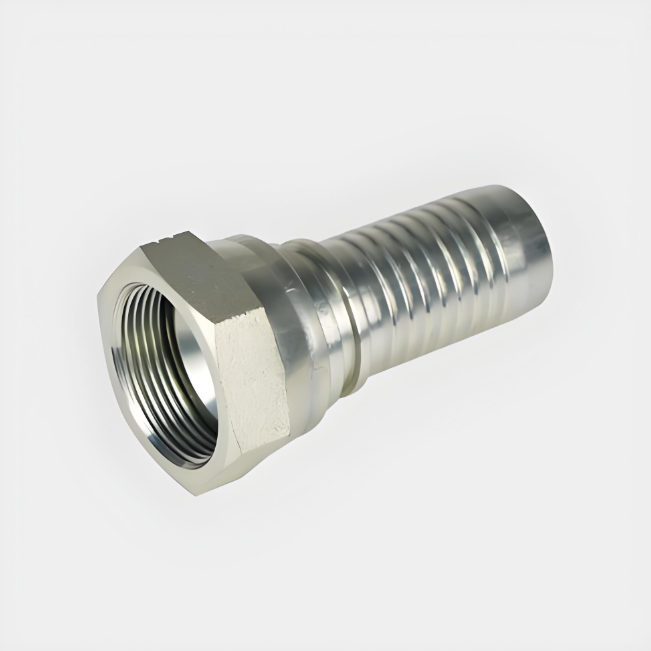how to measure jic hydraulic fittings?
Installation of JIC hydraulic fittings specific installation procedures and precautions:
Preparation before installation of JIC hydraulic fittings
- Tools and materials : Tools: wrenches (size to match the fitting thread specifications), cutting tools (such as pipe cutters), deburring tools, cleaners (such as anhydrous alcohol), lubricants (optional).
Materials: JIC fittings, suitable pipe or hose, sealant (if applicable).
Safety precautions : The operator must be trained and wear protective gloves and goggles. - Check fittings and pipes : Verify that the thread standard (e.g. US UNF) and taper angle (37° or 74°) of the JIC fittings match the pipe.
Check that the pipe end faces are flat and free of cracks or deformation, and recut if necessary.
JIC hydraulic fittings pipe handling
- Cutting and cleaning : Cut the pipe with a special pipe cutting tool to ensure that the cut is vertical and free of burrs.
Clean the internal and external surfaces of the pipe to remove oil, debris or oxidized layer, which can be wiped off with detergent. - Flaring (if applicable) : JIC fittings are to be used with flared pipe ends. Use a flaring tool to machine the pipe end to a standard taper (e.g. 37° or 74°), ensuring that the taper is smooth and free of scratches.
JIC Hydraulic Fittings Installation Procedure
- Assemble the fitting : Slide the nut and sleeve of the JIC fittings onto the pipe in sequence, making sure that they are oriented correctly (e.g. male threads match female threads).
For JIC fittings with metal seals, make sure that the tapered contact area is free of impurities. - Connecting and tightening : Insert the pipe into the fitting body and manually tighten the nut to initial fixing.
Critical step: Use two wrenches, one to hold the fitting body in place and the other to tighten the nut to a standard torque (usually 1/4 to 1 turn, see manufacturer’s instructions). Over-tightening may result in distortion of the metal cone and leakage.
| Pipe outer diameter (mm) | Number of rotating surfaces(FFWR) |
| 6 | 2 1/2 |
| 8 | 2 |
| 10 | 2 |
| 12 | 2 |
| 14,15,16 | 1 1/2 |
| 18,20 | 1 1/2 |
| 22 | 1 1/2 |
| 25 | 1 1/2 |
| 30,32 | 1 |
| 38 | 1 |
| 42 | 1 |
JIC hydraulic fittings sealing test
- Preliminary Inspection : Visually inspect the joint for alignment and full thread engagement.
Use a marker to mark the nut position for subsequent checking for looseness. - Pressure Test : Apply low pressure fluid (e.g., water or air) and observe for leaks.
Gradually increase the pressure to the working range to confirm that the sealing is up to standard.
JIC Hydraulic Fittings Installation Precautions
- Torque control:
JIC fittings rely on metal taper seals, insufficient torque will cause leakage, excessive torque may damage the sealing surface.
- Material compatibility:
Select the material of the joint (such as carbon steel, stainless steel) according to the working conditions to avoid corrosion or high temperature failure.
- Regular maintenance :
Check the joints for looseness or corrosion, especially in the environment of frequent vibration.
For more detailed technical parameters (such as thread size, torque value), please contact our engineers.

